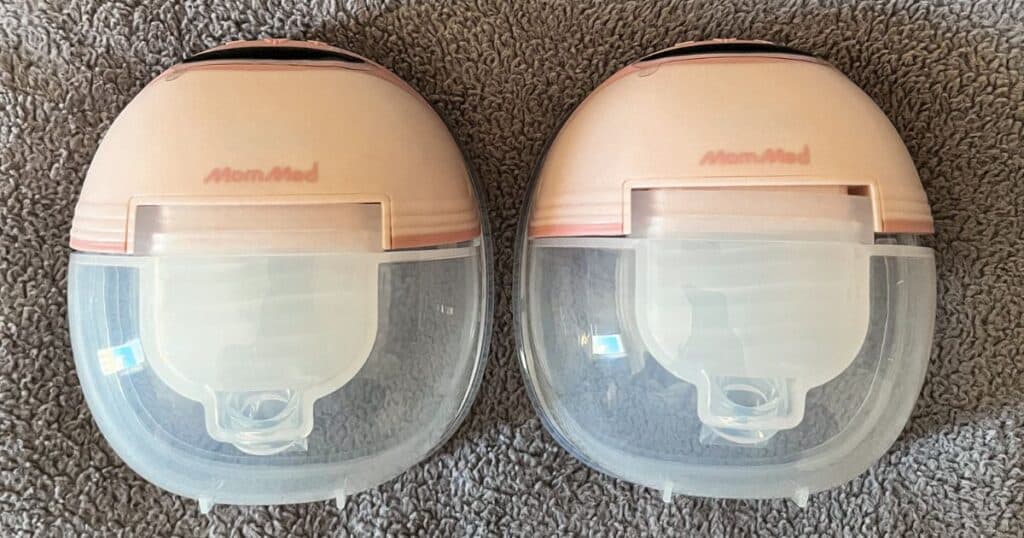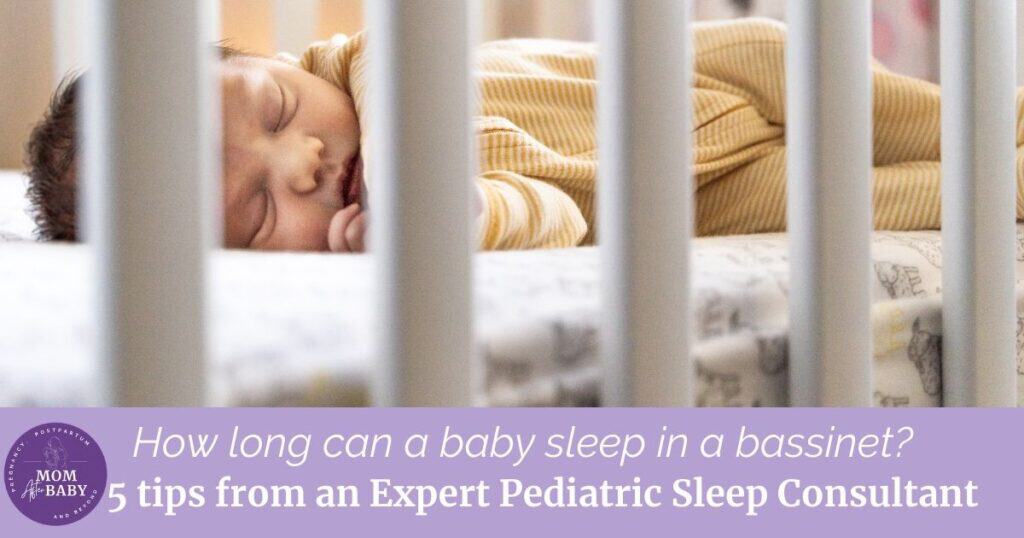Natural Sleep Remedies for Babies Who Struggle to Sleep (Yes, They Actually Work)
This post may contain affiliate links that I may receive a commission from if you click & buy. In addition, the information on this site is NOT intended to be medical advice. See my full policy for more information.
Are you looking for natural sleep remedies for babies that DON’T include crying it out or ignoring your little one’s cries throughout the night? This post goes over some of the most popular natural sleep remedies that will ACTUALLY promote healthy sleep habits for your baby.
These natural sleep options can include rocking your baby at bedtime, swaddling snug in a blanket, or giving them something warm (like a bottle or breast) before bedtime.
If your little one is having difficulty sleeping, these could be great tools to use to help everyone get more sleep.
What causes sleep problems in babies?
There are many reasons babies have trouble sleeping. Some of these troubles include discomfort with their environment, their sleep habits, or physical ailments.
Often, it is a minor issue like having too much light in the room or not getting enough daytime sleep. But, sometimes, your baby may be having trouble sleeping for other reasons such as colic or reflux disease.
However, one of the biggest culprits of sleep problems in infants is allowing them to get too much or too little sleep throughout the day.
Natural remedies can help solve most of these common issues while gently encouraging babies to have healthy sleeping habits before they’re old enough to decide otherwise!

When do babies’ circadian rhythms develop?
Your unborn child can sleep during the latter stages of gestation, but the newborn infant’s circadian rhythm does not develop until birth (or later for some babies).
The cortisol starts to develop at eight weeks of age, melatonin and sleep habits develop between nine to twelve weeks on average. Research on circadian genes, sleep, and body temperature show that they start to increase AFTER three months of being born — so until then, setting up a healthy sleep foundation is key.
Keep in mind too that this developmental process can look a little bit different for babies born preterm.
What can you give a baby to help them sleep?
In a perfect world, sleep crutches are something to avoid to prevent your child from becoming attached and reliant on an item or event to fall asleep.
However, as a sleep-deprived parent, you have to find a happy medium to help your baby get the sleep they need and the sleep you need.
A soft toy or blanket to snuggle with can be comforting and tempting to use. However, putting a young infant to sleep with those things isn’t considered a safe sleep practice. Instead, keep their sleep area empty. If they need the warmth of a blanket, opt for a baby swaddle or sleep sack instead.
Some children may need a pacifier to help mimic the sucking motion of when they nurse or suck their thumb; keep in mind, this could be a tough habit to break later on down the road.
Giving a baby warm milk before bedtime is another natural remedy that some think can help them fall asleep faster. If you’re breastfeeding, you can simply offer breast before bed. Just be sure to brush your little one’s teeth so that milk isn’t sitting built up on their pearly whites.
You can try different tactics and find what works best for you and your baby at the end of the day.
Natural Sleep Remedies for Babies Who Struggle to Sleep
Have a set place for them to sleep.
Having a set place for your baby to sleep can help them become more comfortable with their surrounding environment.
According to the American Academy of Pediatrics, they suggest that “infants sleep in the parents’ room, close to the parent’s bed, but on a separate surface designed for infants, ideally for the first year of life, but at least for the first 6 months”.
Decide how long your baby will be sleeping in your room. Then, take the steps to make it a safe & healthy sleep environment:
- Use a firm breathable baby mattress (this one is our favorite).
- No bumpers or thick bedding in the crib.
- No toys or blankets.
- Make sure the sleeping surface is FLAT.
- Always place baby to sleep on his or her back first.
Use Red Light to Increase Sleep
Red light can have a similar effect on melatonin production, just like darkness does.
Some parents have found using red lights actually helps their children become rested and tired.
If your infant has a hard time falling asleep, consider using the Hatch rest+, it is a toddler sleep trainer, baby sound machine, and red light emitter.
If it is worth anything, we have used the Hatch Rest Sound Machine for my now toddler and it has worked wonders for us! We now use it as a sleep trainer so that the light is on a dim red color throughout the night, then upon waking, the light changes to green (indicating it’s time to get out of bed). Every morning my toddler runs into our room saying “mommy, the light is green now”, so I think it’s safe to say it’s working!
Using Pink Noise As A Sleep Cue For Baby
Pink noise is a type of sound that helps calm your senses and help you sleep. It is a much deeper sound compared to white, black, and brown noise due to its more intense, lower frequency sound.
In one 2012 study, they found that “steady pink noise has significant effect on reducing brain wave complexity and inducing more stable sleep time to improve sleep quality of individuals.“
Unfortunately, pink noise doesn’t have a ton of research compared to the more popular white noise. Though the minimal studies that are out there do tend to highlight the many benefits of pink noise and its correlation with better sleep.
If you’re looking to try out some Pink Noise for your little one, this Pink Noise Sound Machine by Sound Oasis specifically comes with 20 non-looping pink noise sounds to help your little one get some much-needed rest.
Why is pink noise different than white noise for your baby?
White noise is by far more common and popular when it comes to sound machines for babies. In fact, I use a white noise machine too!
However, while pink noise creates a deep, lower frequency sound. White noise creates a steady humming sound (like a fan or blow dryer). White noise can also mask loud sounds that disrupt your brain during sleep making it a more preferred choice for parents and infant sleep experts.
Is one really better than the other? It really just depends on what works best for your baby and helps them fall asleep and stay asleep through the night.
A consistent bedtime routine
A consistent bedtime routine is the best way to ensure that any child will sleep well. It truly is one of the best natural sleep remedies for babies.
It can be hard to implement this for a newborn baby, but it becomes much more manageable as soon as they are old enough (around three to five months old).
My favorite way to learn all about baby sleep and bedtime routines was with the help of Taking Cara Babies. Her newborn class and 3 to 4 months ebook was hands down my holy grail to developing a sleep routine that had my first little guy sleeping through the night by the time he was 5 months old WITHOUT any excessive crying or crazy sleep tactics.
Always remember, even once your little one has developed their own circadian rhythm and knows how long they need to sleep, a bedtime routine can help them fall asleep much more consistently.
A consistent bedtime routine includes:
- Being calm and relaxing
- Walking to the bedroom with your child (or carrying)
- Bath or shower time
- Reading a story together or singing songs before going into their room for some quiet time.
- Red light can help prepare your baby for bed.
- A soft toy or blanket for comfort and snuggles.
- Bath time at the same time every night
- Finally, be sure to keep consistent with your routine for best results.
Swaddle them correctly
Swaddles work well to soothe your baby and help them to sleep.
Some people recommend using the traditional “burrito” style, where you wrap their arms snug to their chest with one arm on top of the other with a baby swaddle blanket.
Others say it’s better for babies who have trouble sleeping if they are wrapped loosely enough for them to be able to move their arms comfortably.
While you may see a difference in the type of swaddle that works best for your child, it’s always essential to make sure they are tucked securely inside of it and comfortable.
Some of the most popular baby swaddles include:
- Woolino Baby Sleep Sack (Hands down my favorite for both of my boys who have used them for the last 2 years! Code: MOMAFTERBABY10 saves 10% off)
Parent and child contact
Parent-child contact (skin to skin) can help your baby feel secure and comfortable allowing them to relax faster and fall asleep.
Cuddling or nursing before bedtime is said to be helpful in some cases, and you might even try rocking your child while wearing a cozy sleep sack for an added boost of comfort!
Breastfeeding may also help provide better quality sleep for your baby. Especially on the nights they’re waking to eat often, having a nursing-friendly bassinet like this one can make the nights 10x easier for nursing moms.
Naturally, breast milk tends to have higher amounts of melatonin present at night, which can help soothe your baby, fun fact!
Stay Put! Don’t come back into the room unless there is a reason.
Some babies take longer to fall asleep than others and that’s ok. Instead of rushing back into the room, give them 10 to 15 minutes and see what they do.
Giving your baby the chance to self-soothe and fall asleep on their own is an important skill for them to develop.
It can be helpful for parents to keep them company before bedtime so that they know you’re there, but once you put them in their crib, give them a chance to put themselves to sleep. Having a guide such as the Taking Cara Babies ebook can be really helpful in navigating these early days of helping babies transition to their own room.
However, we are not suggesting you let your baby cry it out. We believe in supporting your child where he or she is at developmentally. If that means extra snuggles to sleep, then so be it.
Remember, young babies NEED connection and comfort. It’s one of their main need for survival.
Daytime walks
Daytime walks can help your child sleep better at night. This practice will also help them build their circadian rhythms.
If you take a walk during the day, the light exposure can help your baby differentiate their days from nights and get better sleep.
You may find that this natural remedy is also helpful in calming your baby down and making them less likely to startle easily when they are trying to fall asleep. Of course, it also provides you time to receive fresh air and get your body moving!
Understand your baby’s sleep patterns.
Understanding your baby’s sleeping cues is going to be important in making sure they are getting enough daytime sleep without letting them sleep TOO much.
Common signs baby is getting sleepy might look like:
- Closed or clenched fists.
- Tugging or pulling at ears.
- Turning head side to side.
- Bringing hands to mouth.
- Crying or whining.
- Rubbing eyes.
Have you noticed your baby shows any of these sleepy signs? If not, this week I want you to pay extra close attention to the movements they make when it’s close to their sleep time.
Natural Sleep Remedies for Babies: Recap
These natural sleep remedies for babies listed above are a great way to help your baby or child fall asleep without any added pressure or stress.
There are many different types of natural sleep aids, including making changes in sleeping arrangements and using red light at night, and sun exposure during the day.
The most crucial step is to be consistent and to create a routine. While using these natural sleep remedies for babies, you just may find yourself getting some more sleep, too!
Read more breastfeeding articles here:
20 Breastfeeding Hacks and Secrets Every New Mom Should Know
The Ultimate MomMed S21 Wearable Breast Pump Review
S10 Pro Hands-Free MomMed Breast Pump REVIEW
10 Tips for Successful Breastfeeding for New & Expecting Mothers
Momcozy Breast Pump Review for the S12 Pro (All You Need to Know!)
Body Armor Drink and Breastfeeding
Best Merino Wool Sleep Sack for Toddlers & Baby
How to Make Breast Milk Popsicles for Teething Discomfort (Yes, It Works)
6 Reasons Why Your Baby is Waking at 5 AM
How Long Can a Baby Sleep in a Bassinet? 5 Tips to Transition to a Crib Peacefully
Baby Sleep Cues & How to Understand Them
5 Tubby Todd Products That Will Make Your Baby’s Skincare Routine BETTER!
Popular Baby Items You Don’t Need (seriously, save your money!).


















